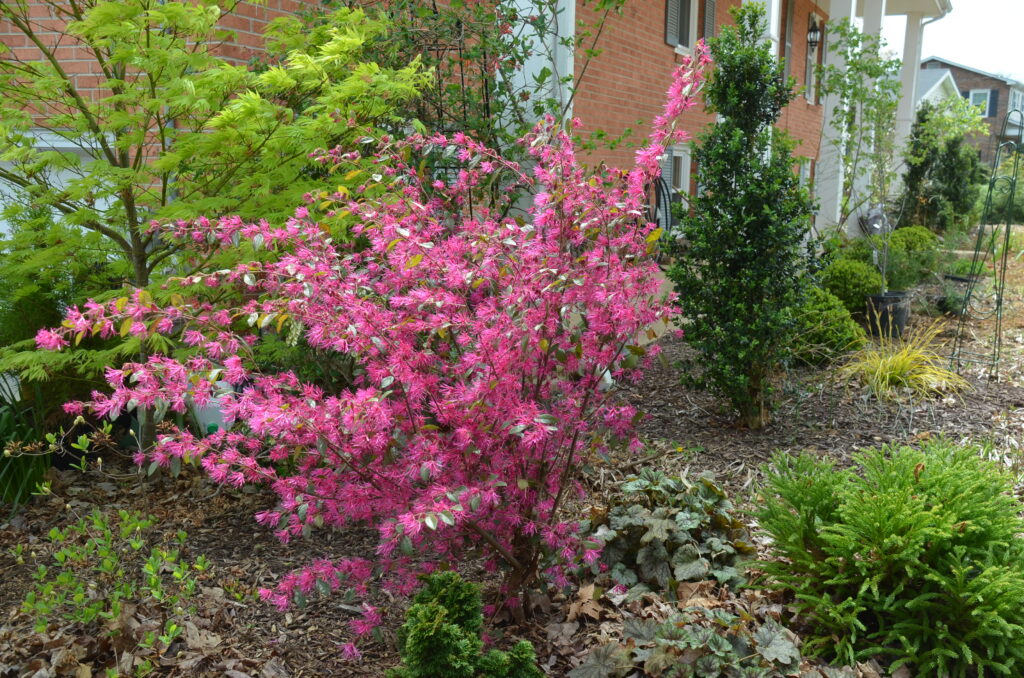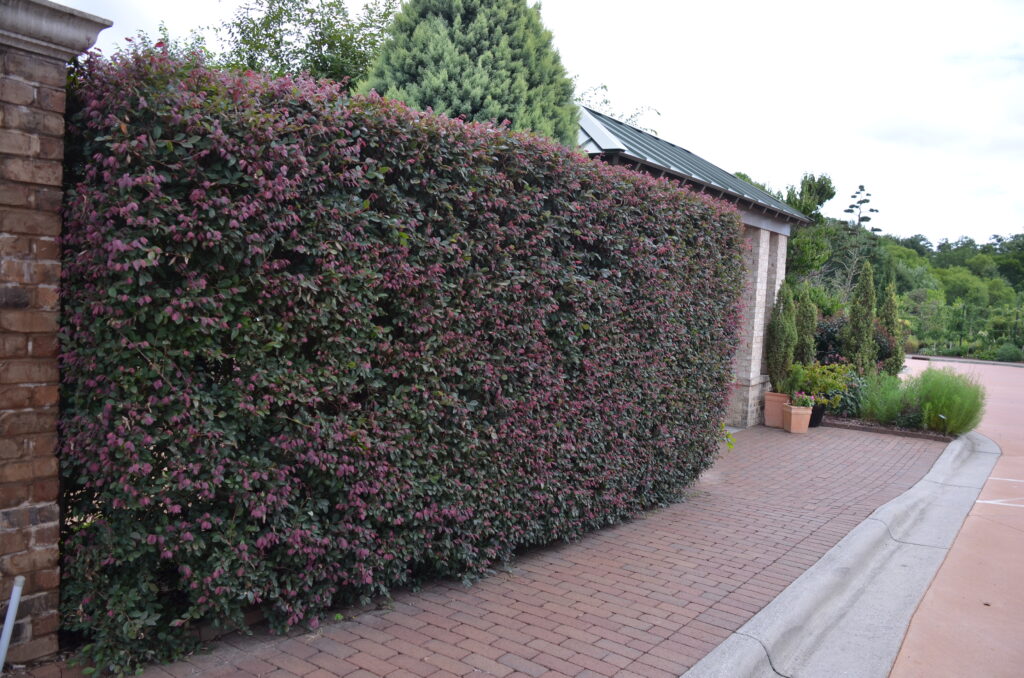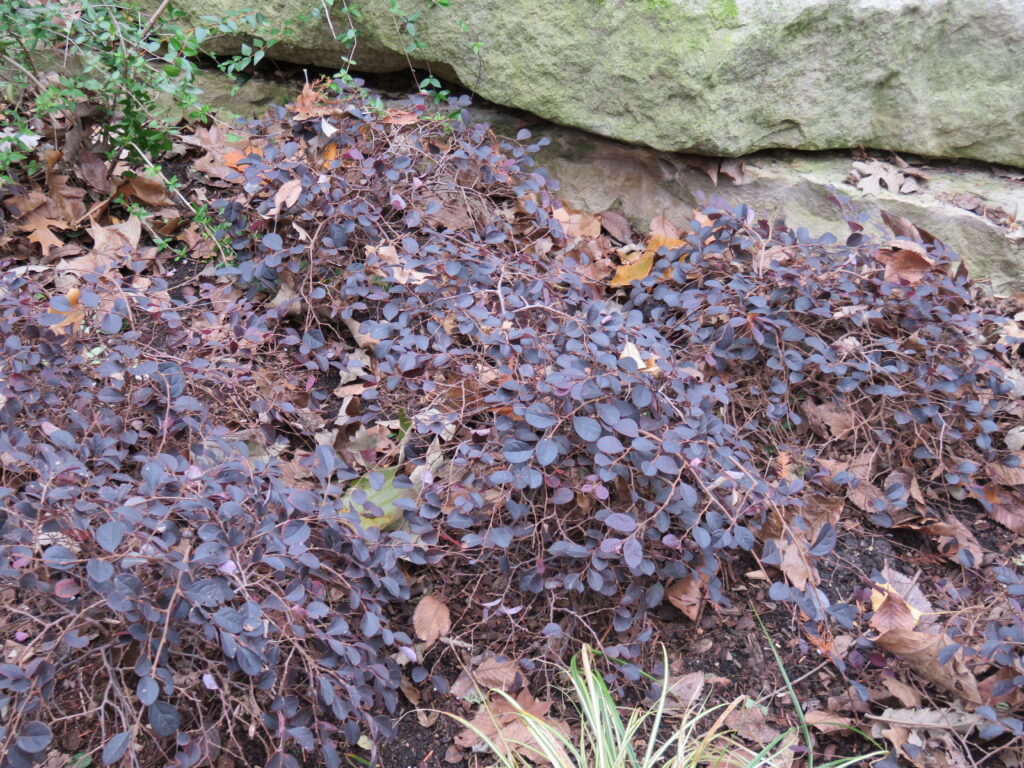
Chinese fringe flower, aka Loropetalum (Loropetalum chinense) is related to witchhazels (Hamamelis spp) and is native to China, Japan, and the Himalayas (USDA 7-10). In the southern U.S., fringe flower is usually evergreen or semi-evergreen, and is deciduous in 6b-7a. For those who garden in areas that occasionally are hit cold winter snaps, plant them in wind-sheltered spot. Their colorful fragrant flowers appear from late winter into spring and early summer.
Fringe flowers are easy to maintain in a bright, sunny mornings and partial shade the rest of the day. Ideally, these shrubs are protected from intense mid-day sun. Bloom numbers are fewer if shrubs are not receiving adequate sunlight.
Fringe flowers prefer a well-drained, humus-rich, acidic (pH 4.5 to 6.5) soil. Mulching with 2 to 3 inches pine straw and pine wood chips aids to conserve soil moisture and suppress weeds. During periods of extreme heat or abnormally long dry spells, fringe flowers should be watered more frequently. Fertilize fringe flowers in early spring with a slow-release all-purpose fertilizer like 10-10-10.

Shrubs have a natural, graceful shape and arching stems. They are also great privacy barriers such as for hedging or topiaries. Pruning is usually limited to removal of dead or diseased branches. Otherwise, maintain each variety’s natural attractive form. Fringe flowers bloom on old wood, so hold off any cosmetic pruning until the main spring bloom period is over. Secondary late summer flowering is commonplace.
Many cultivars are available. Here is a short list: pink flowering forms include ‘Blush’, ‘Burgundy’, ‘Carolina Midnight’, ‘Ever Red,’ Jazz Hands Pink®, Pizazz’, ‘Plum Delight’, ‘Plum Diamond’, ‘Purple Pixie’, and ‘Ruby’. White flowering forms include ‘Carolina Moonlight’, ‘Emerald Snow™, Jazz Hands® White, and ‘Snow Muffin’.
In the South fringe flower is planted in a large container and usually do not require winter protection. Select dwarf or compact cultivars that take longer to outgrow the container. Container-grown shrubs will need more frequent watering.

Shrubs are not troubled by pests or diseases if the plant is properly sited. Flowers attract bees and butterflies although deer tend to avoid them. Fringe flower is not considered an invasive plant in the U.S.

 Posted in
Posted in 
